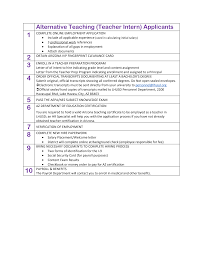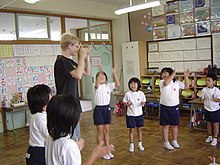
Making math more fun for your child is easy than you may think. These are some great ideas. Flashcards, mnemonics and 10s out of tens are some examples. Kids will love playing with these! Another fun activity is this: Make a flashcard with a single number and recite it. It will be a fun activity that your kids will love! And don't forget to share it with your friends!
Making math fun
It is important to make math relevant to every day life. This is one way to make math more fun for kids. Math should be relevant to your everyday life and can be applied to the goals of your child. To help kids relate math to the real world, take a walk outside and point out shapes and angles. Math is everywhere around us: shadows on buildings and angles, Fibonacci sequences on sunflower petals, etc. Use this knowledge to make math more fun for kids.
Creating flashcards
It is a great way for kids to learn facts and fluency by creating flashcards. Quizlet is another option. It allows users to create and share group flashcards. Some even offer the ability to make virtual cards. Google Docs allows you to create your own cards. These websites are great for adding images and multiple-choice answers. After you have created your flashcards, your kids can practice with them by printing them out or storing them on a computer.

Creating mnemonics
Creating mnemonics for math can help kids memorize math concepts and word problems. These can be used from elementary school to high school, and they can even be used for a higher grade level. Teaching mnemonics to math should include explanations and demonstrations. After demonstrations that were successful, teach your students how you use them.
Making 10s
One of the most important steps in teaching your child about counting is to introduce the concept that making tens. This concept can be easily demonstrated by using base 10 blocks. Students can then see that base 10, which has no ones, becomes one when they add four more. A twenty-frame mat with two yellow and three red counters can be used to help your child understand how to replace a 0 by a number.
Bar graphs
Creating bar graphs for math kids is a fun and interactive activity that combines measuring skills and the art of graphing. Students are required to work together in small groups and brainstorm what makes a good graph. Each group must choose a title and label the horizontal and vertical axes. Students can also use an interactive Velcro dartboard to collect data. For an added challenge, kids can use pom-poms as targets.
Scaled picture graphs
Creating scaled picture graphs for math is a skill that will help your children learn how to analyze data in a visual way. There are two main parts to a pictograph: the legend and body. The legend informs students how many objects are included in each image, while the body lists groups of objects. Based on data analysis, the body separates the objects. A business might have rows that correspond to each month, and a picture of an Apple for each sale.

Scaled bar graphs
Your students will benefit from creating scaled bar graphs in math classes. This can allow them to better understand multiple-step problems and help them interpret data in new ways. The learning objective "Problems With A Scaled Bar Graph” refers to CCSS as well as state standards that support student involvement and academic performance. This lesson is directly related to standard 3.MD.B.3 from the common core math standards. Not only can you use a common tool for graphing, but you also have worksheets available that will teach students how to create scaled pictograms.
FAQ
Is it necessary to attend college in order to be an early childhood educator
Yes, but you may consider attending college to help prepare for a career.
It is important that you realize that being a teacher can be difficult. Every year, many people are rejected. Many people also leave college after only one semester.
A teacher must meet all requirements.
How long does it usually take to become a early childhood teacher?
To complete a bachelor's in early childhood education, it takes four years. Two years are required to take general education courses offered by most universities.
After finishing your undergraduate degree, you'll usually be accepted into graduate school. This step allows for you to specialize in one area of study.
One example is to choose to specialize in child psychology or learning difficulties. You must apply for a teacher preparation program after you have completed your master's degree.
This process may take another year. To gain practical knowledge, you will partner with experienced educators.
You will also need to pass state exams in order to become a teacher.
This process can take many years. Therefore, you won't immediately be able jump into the workforce.
What is an alternate school?
The idea behind an alternative school is to offer students with learning difficulties access to education by providing them with support from qualified teachers who understand their individual needs.
The aim of an alternative school is to provide children with special educational needs with the opportunity to learn within a normal classroom environment.
A lot of help is also available for them when they need it.
An alternative school is not just for those who have been excluded from mainstream schools.
They are open to all children regardless of ability or disability.
Statistics
- In most developed countries, a high proportion of the population (up to 50%) now enters higher education at some time in their lives. (en.wikipedia.org)
- They are more likely to graduate high school (25%) and finish college (116%). (habitatbroward.org)
- Among STEM majors, that number is 83.5 percent. (bostonreview.net)
- Think of the rhetorical power of nineteenth-century abolitionist Harriet Beecher Stowe, Martin Luther King, Jr., or Occupy Wall Street activists with their rallying cry of “we are the 99 percent.” (bostonreview.net)
- These institutions can vary according to different contexts.[83] (en.wikipedia.org)
External Links
How To
Why homeschool?
When choosing whether to homeschool or send your child to school, there are several factors to consider.
-
What kind of education do your children need? Are you looking for academic excellence or social skills development?
-
What level of involvement do you desire to have in your child's education and learning? Are you interested in keeping up with what your child does? Do you prefer to stay informed about what your child is doing?
-
Do you have any special needs for your child? If so, how will you address those needs?
-
Do you have the ability to manage your children's time? Can you make a commitment to your child's education at home every day of the week?
-
What subjects are you going to cover? Math, science, language arts, art, music, history, geography, etc. ?
-
How much do you have to pay for your child's education
-
Is your child old enough for school?
-
You will need to find somewhere to place your child. You need to locate a suitable space that is large enough for a classroom as well as adequate facilities, such as bathrooms or kitchens.
-
What's your child's average age?
-
When is your child supposed to go to bed?
-
When does he/she get up?
-
How long does it take for you to get from A to B?
-
Is your child's school located far from you?
-
How far is your home from your child's school?
-
How will you get your child from one place to another?
-
What are some of these benefits?
-
What are the cons?
-
Who will watch over your child when he/she goes outside?
-
What are your expectations of your child?
-
Which type of discipline would you prefer?
-
What curriculum would you choose?
Homeschooling can be done for many reasons. Here are some of the reasons.
-
Your child has learning disabilities that prevent him/her from attending traditional schools.
-
You want to provide an alternative form of education for your child.
-
You want more flexibility with scheduling.
-
Avoid high tuition fees
-
Your child is receiving an education of a higher quality than the one he/she could get in a traditional school.
-
You think you can teach your child better than the teacher in a traditional school setting.
-
You don't love the way the school system operates.
-
You are uncomfortable with the rules and regulations in the school system.
-
You want your child develop a strong work ethic.
-
You want to give your child the freedom to choose what courses you take.
-
You want your child to receive individual attention.
There are other benefits to homeschooling:
-
There's no need to be concerned about books, uniforms pencils, paper or supplies.
-
You can tailor your child's education to suit his/her interests.
-
Parents can spend more time with their children when they homeschool.
-
Students who are homeschooled tend to learn more quickly than peers because they don't have to be distracted by their peers.
-
Homeschoolers often score higher than others on standardized tests.
-
Homeschooling families are generally happier.
-
Homeschool students are less likely to drop out of school.